Chase Lake National Wildlife Refuge
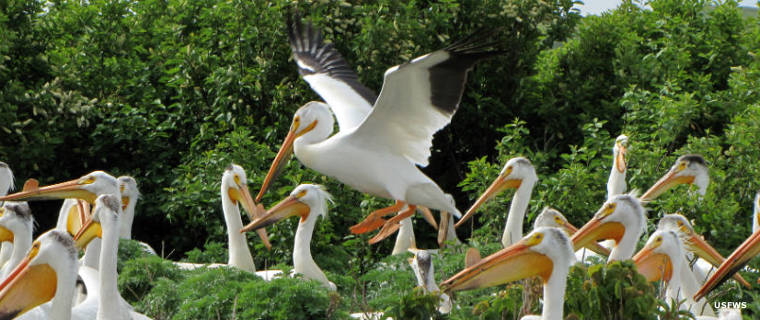
White pelican nesting area at Chase Lake National Wildlife Refuge

Chase Lake National Wildlife Refuge is a 4,385-acre property that is home to more breeding pairs of white pelicans than any other protected property in the United States. The refuge was set aside in 1908, one of the first National Wildlife Refuges to be created by President Theodore Roosevelt. At that time, there might have been 50 breeding pairs of white pelicans in the area. Today, there are more than 15,000 breeding pairs who use the property. Their favorite nesting spot seems to be on the two big islands in the lake. In 1975, Congress declared most of the dry land (4,155 acres) on the refuge to be wilderness area. That part of the property that is not designated wilderness is separated from the rest by a powerline right-of-way.
The refuge is composed of about 50% water, 50% dry land. Besides Chase Lake, there is a large saline wetland, three semi-permanent wetlands, one impounded wetland, a large fen and several seasonal wetlands. The impounded wetland and Chase Lake itself seem to be wet year round but most of the other wetland areas tend to run dry by mid-summer.
The prairie in this area is dominated by mixed grasses, mostly green needlegrass and blue grama. There are also legumes, tame grasses and many varieties of wildflowers mixed in. The NWR is surrounded by 10,000 acres of roadless native prairie, a xeric mixed-grass eco-system unique to North Dakota and the Great Plains.
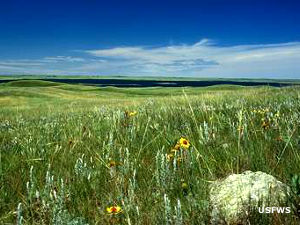
Chase Lake itself is highly alkaline and doesn't support fish. But there is a surplus of Tiger salamanders in the area, enough to support the growing population of white pelicans, anyway. There are also more than a few ibises, herons, loons, ducks, geese, terns, American avocets, California gulls, ring-billed gulls, double-crested cormorants, sharp-tailed grouse, ring-necked pheasants and hawks that use the property, too. In migration seasons you'll also probably spot a few sandhill cranes and tundra swans resting in the area. Among the mammals on the property you'll find coyote, long-tailed weasel, fox, badger, skunk and white-tailed deer.
Some sections of Chase Lake National Wildlife Refuge are off-limits to people, especially in nesting season (April to September). No camping or campfires are allowed on the property. The only access allowed is by foot. There are a few trails that allow access for bird watchers/photographers but that is the primary human function on the property. The American Bird Conservancy has designated Chase Lake NWR as one of America's 500 Most Important Bird Areas as some 296 species have been documented on the refuge or in the immediate area. Researchers have banded some of the white pelicans over the years and they have been found as far away as the Everglades in Florida.
To get there: From Medina, ND on Interstate 94: go north 10 miles on Stutsman County Road 68. At the sign for Chase Lake NWR turn and go west for seven miles. The first three miles will be on good gravel road, the last four miles on a two-track trail across the prairie. Then go 1 more mile south across the prairie to Chase Lake Pass on a small rise above the lake: parking area and best spot for viewing the entire refuge.
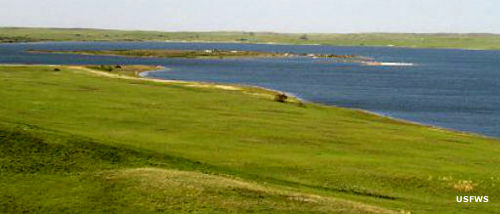
Chase Lake National Wildlife Refuge wetlands
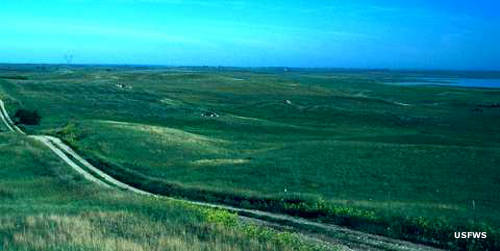
The two-track access road
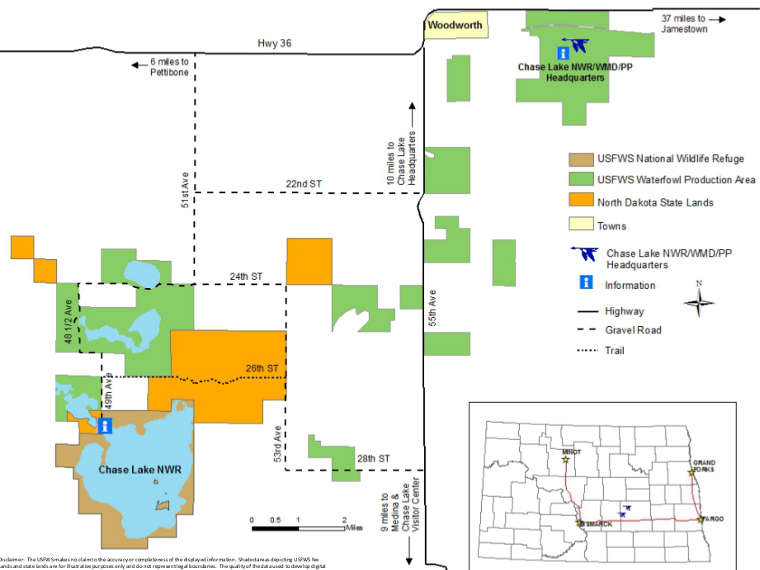
Photos and map courtesy of the US Fish & Wildlife Service